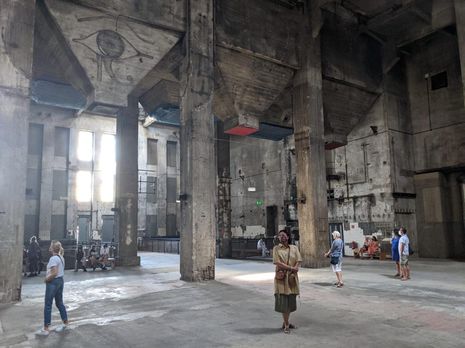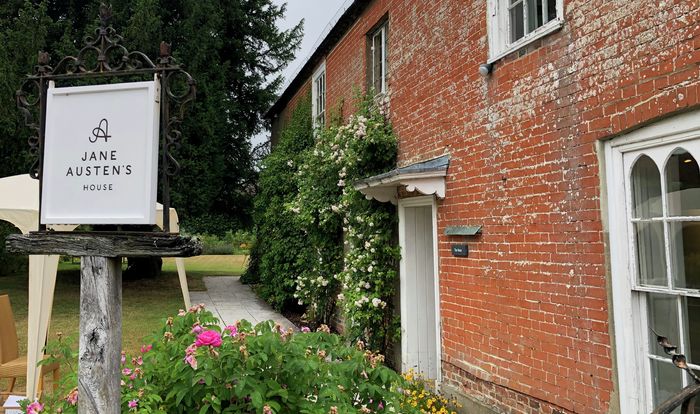Techno temple Berghain turns into an art gallery
In part of our Art Where You Are series, Isabel Sebode looks at how Berlin clubs are rethinking the relationship between culture and clubbing

Restrictions facilitate creativity. What seems like a hollow and confusing statement has been in focus recently, as we are witnessing the unique ways that society is adjusting and thereby reinventing the traditional means to present art.
Facebook has been booming with announcements of online art discussions, interactive events and other innovations that seek to bring art, artist and viewer into a renewed dialogue. Art is transported into unfamiliar spaces – whether these be virtual, or simply unusual, makes little difference. The bridges are built to keep culture alive, so making amendments is only natural. It therefore comes as no surprise that Berlin’s cultural scene is experiencing a miniature renaissance as it awakens from its slumber. The city has made an effort to revive its artistic impetus whilst making use of the spaces that need to remain closed, such as clubs. Being born and raised in Berlin myself, one of the first questions many people ask me is whether I have been to Berghain. Whilst the answer is still no, that might change soon in an unexpected way.
The Berghain is one of the most renowned techno clubs in the world. Its name is given mystique by the Friday evening to Monday morning opening times and the stories of people spending entire weekends partying, unaware of the time of day – the power of music (and other intoxicating substances) truly is incredible. Unsurprisingly, Berghain is currently closed, yet in a very Berlin-esque mentality the space is being reused and recycled into a gallery.
“With galleries and exhibitions gradually freeing themselves from the white walls and large empty rooms, art is being positioned back into its place of origin: daily life.”
The first exhibition to settle into a building belonging to the former power plant (that is now the Berghain) was TamTam: eleven songs. Appropriately named, this sound installation ran from the 15th July to the 2nd August and made use of the impressive concrete walls to echo the sounds created by the artist-duo Sam Auinger and Hannes Strobl. With their use of the industrial space as a stimulus in the creation of the sound they managed to create an almost dystopian soundscape. The viewer, or listener, is brought into a momentary trance, as the walls and booming music fuse into each other.
Whilst TamTam made use of an accompanying building next to the actual club, the exhibition Studio Berlin (starting on the 9th September) will occupy the floors of the club as long as it remains closed. Studio Berlin showcases the pieces of around 100 Berlin-based artists, curated and selected by art collectors Christian Boros and Karen Lohmann, owners of the Boros Foundation Bunker. This former air-raid shelter shall be home to some of the most famous contemporary European and international artists. From bunker to power plant, art remains in motion.
The connection between Boros and Berghain comes naturally. From 1992 to around 1995 the WWII-bunker-turned-art-collection acted as a hardcore techno club. After several raids, however, this eventually closed and became part of the lineage leading to the birth of the Berghain in 2004. With the annual birthday party of the Berghain being held in the bunker, connections are held close. Close too is the collaboration between artists and curators, as Boros recalls speaking for hours on end each day with the artists involved, which range from Olafur Eliasson to Wolfgang Tillmans. The ethos of familiarising a mystified space and bringing diverse people together in a club marked by its exclusiveness defines the enterprise. Doing this through art is only natural, considering that Berghain’s notorious bouncer, Sven Marquardt, is now almost equally well known for his photography.
The creative decision to reinvent the relationship between space and art has been an ongoing process. With galleries and exhibitions gradually freeing themselves from the white walls and large empty rooms, art is being positioned back into its place of origin: daily life. Whether it be the art on the Berlin Wall at the East Side Gallery or the Olympic Sculpture Park in Seattle, these ‘exhibitions’ exemplify our growing awareness of the abnormality in placing art within confined rooms; spaces completely detached from life and distanced from the viewer. Whether bunker, power plant or club, or even cottage as we see in Cambridge’s own Kettle’s Yard, art is discovering its natural habitat in locations filled with humans. Created in life, felt in life and exhibiting emotions of life, the peculiar placement of art in these industrial or familiar places is surprisingly natural.
Nonetheless, the opinions are mixed. German magazine WELT calls the Berghain transformation a “sacrilege as with the Hagia Sophia”, expressing a greater anxiety around the demystification of the techno, sex and drug bunker with the entry of daylight. Techno connoisseurs see their achievement of crossing over the hallowed doorframe being devalued by being shared with the common folk; the proletarian of the simple world of art. “For the first time, even grandmas with zimmer frames and children will be able to get in,”says Christian Boros, enthusing over what is some people’s worst fear.
Now, heads up everyone. It’s just an art gallery. When the lights go out and the techno starts again, Berghain will continue to be Berghain.
 Comment / Plastic pubs: the problem with Cambridge alehouses 5 January 2026
Comment / Plastic pubs: the problem with Cambridge alehouses 5 January 2026 News / Cambridge businesses concerned infrastructure delays will hurt growth5 January 2026
News / Cambridge businesses concerned infrastructure delays will hurt growth5 January 2026 News / New movement ‘Cambridge is Chopped’ launched to fight against hate crime7 January 2026
News / New movement ‘Cambridge is Chopped’ launched to fight against hate crime7 January 2026 News / AstraZeneca sues for £32 million over faulty construction at Cambridge Campus31 December 2025
News / AstraZeneca sues for £32 million over faulty construction at Cambridge Campus31 December 2025 News / Uni-linked firms rank among Cambridgeshire’s largest7 January 2026
News / Uni-linked firms rank among Cambridgeshire’s largest7 January 2026










